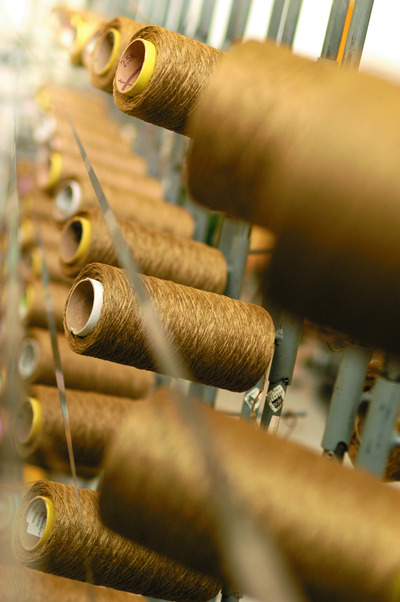Compressed air savings identified at carpet manufacturing plant
Friday, 25 October, 2013
Godfrey Hirst Australia has been manufacturing in Australia for more than 140 years, producing an extensive range of residential and commercial carpet products. Guided by a policy of continuous improvement and a commitment towards minimising environmental impact, the company’s engineers sought submissions from a number of compressed air specialists to conduct a full analysis of their compressed air supply system.

Structured processes, coupled with the latest technology to identify energy-efficiency opportunities, resulted in Southern Cross Compressors being selected and commissioned to undertake a comprehensive audit of the compressed air systems within the Victorian manufacturing plants. The brief was to identify opportunities for improvements in efficiency, reduce operating costs and at the same time further improve the company’s environmental footprint and sustainability.
The review included a complete compressed air audit and analysis of both the supply and demand side at sites within Victoria. On the supply side, this involved reviewing the size of the compressors, their installation, filters, dryers and receivers, supply pipe dimensions, pressure settings and the method of control. Critical ventilation and maintenance programs were also studied to allow recommendations to be made. The demand side audit reviewed piping to point of use, identifying air leaks, incorrect pressure settings, pressure drops and inappropriate uses.
Using the latest ultrasonic flow meter, Southern Cross technicians were able to determine the exact air flow and usage profile on each line for each shift on all sites studied. With dramatically varying loads, profiles were then established to identify more suitable, cost-effective equipment to ultimately achieve maximum efficiency.
Air leaks on the demand side were identified using an ultrasonic leak detector, with every leak tagged, photographed and detailed in a report providing information on leak volumes, corresponding kilowatts wasted and annualised energy costs. As a result of the audit, air leaks alone were identified as costing the company thousands of dollars per annum in wasted power and with energy costs escalating, this would only increase.
The air supply side audit identified additional savings through the use of more efficient modern compressors, common issue opportunities, oversized compressors in use, inefficient or non-existing sequencing between multiple compressors, flow imbalance between main air lines, incorrect pipe sizing causing pressure drop, incorrect pressure settings and undersized air receivers.
Overall, the audit identified savings of over 50% on compressed air energy costs, plus a host of environmental benefits.
“The benefits of highly specialised knowledge and the use of the latest technology in this audit has produced astounding results for the company with long-term benefits,” said Godfrey Hirst Environmental Engineer Robert Lunardelli. “An outstanding result.”
Heat recovery could save money and the environment
Up to 96% of the drive energy supplied to a compressor is available for reuse — this is...
Dirty dancing across a new energy landscape
The real-time balancing of electricity generation (supply) and demand is like a dynamic dance and...
Digitising Australia's buildings is key to tackling net zero
Businesses around the world are continuing to focus on net zero, and building construction and...











